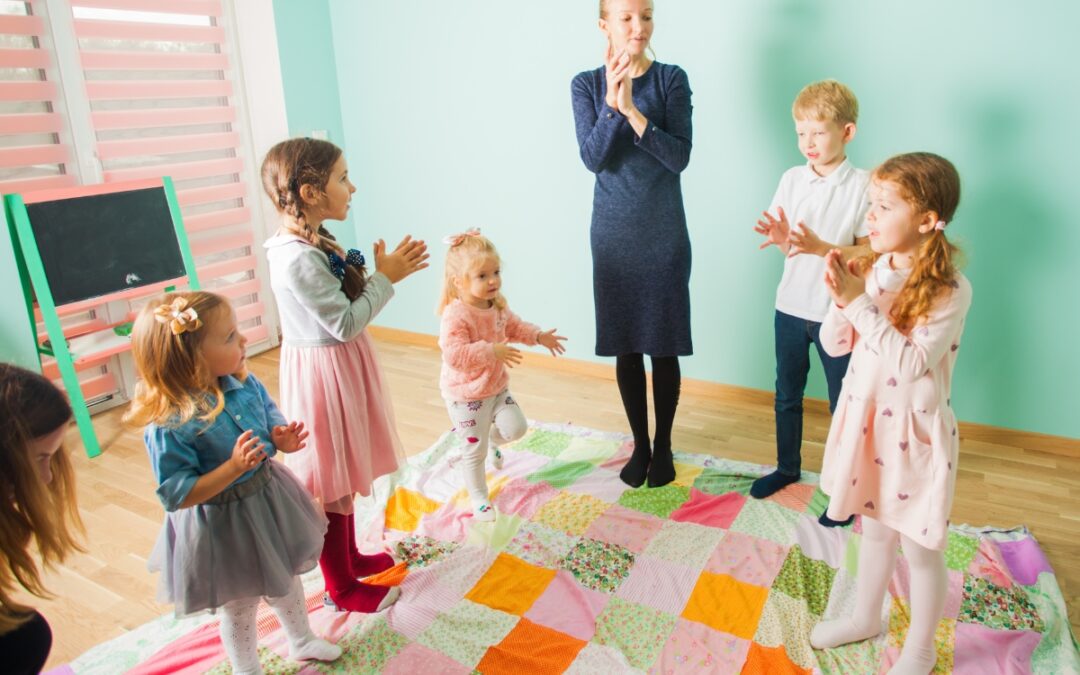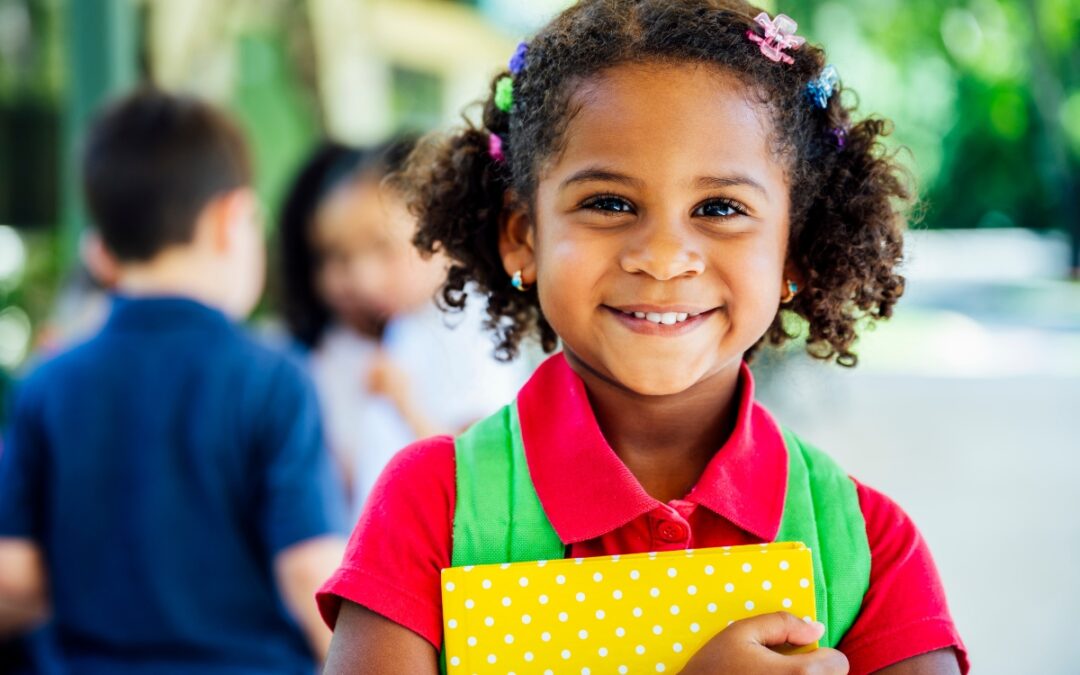
by Ali Haider | Oct 18, 2023 | Parenting Tips
Do you want your child to grow up bilingual or multilingual? Do you wonder how to introduce more than one language to your toddler without confusing them? If so, you are not alone. Many parents around the world want their children to learn multiple languages and reap the benefits of being multilingual.
But how do you go about teaching multiple languages to your toddlers? Is there a right or wrong way to do it? What are some tips and tricks to make language learning fun and effective for your little ones?
In this blog post, we will answer these questions and more. We will also share some infographics that illustrate the benefits of language learning and some strategies to teach multiple languages to your toddlers.
Why Teach Multiple Languages to Your Toddlers?
There are many reasons why you might want to teach multiple languages to your toddlers. Here are some of the most common ones:
- Cultural and family reasons: You might want your child to learn the language of your heritage, or the language of your spouse or partner. You might also want your child to communicate with relatives or friends who speak a different language.
- Educational and cognitive reasons: You might want your child to have an advantage in school and in life by being bilingual or multilingual. Research shows that learning multiple languages can improve academic skills, memory, problem-solving, creativity, and critical thinking.
- Social and emotional reasons: You might want your child to develop empathy, tolerance, and respect for other cultures and people by learning multiple languages. Learning multiple languages can also boost self-confidence, self-expression, and identity formation.
Whatever your reasons are, teaching multiple languages to your toddlers can be a rewarding and enriching experience for both you and your child.
How Many Languages Can Toddlers Learn at Once?
One of the most common questions that parents have is how many languages can toddlers learn at once. The answer is: it depends.
There is no definitive answer to this question, as different factors can affect how many languages a child can learn at once. Some of these factors include:
- The languages that the parents speak: If both parents speak different languages, then the child can naturally learn both languages from birth. If one parent speaks more than one language, then the child can also learn those languages from that parent. If both parents speak the same language, then they can introduce another language through other sources, such as books, videos, music, or classes.
- The exposure and input that the child receives: The more exposure and input that the child receives in each language, the more likely they are to learn it. Exposure means how often and how long the child hears or sees the language. Input means how rich and meaningful the language is for the child. For example, reading a book, singing a song, or having a conversation are more effective ways of providing input than just watching TV or listening to the radio.
- The motivation and interest that the child has: The more motivated and interested the child is in learning a language, the more likely they are to learn it. Motivation and interest can be influenced by various factors, such as the relevance of the language to the child’s life, the attitude of the parents and others towards the language, and the feedback and encouragement that the child receives.
Based on these factors, some children can learn two or three languages at once, while others might find it easier to focus on one language at a time. There is no right or wrong way to do it, as long as you provide enough exposure, input, motivation, and interest for each language.
How to Teach Multiple Languages to Your Toddlers?
There are many ways to teach multiple languages to your toddlers. Here are some of the most common ones:
- Use two languages from the start: Many children grow up learning two languages at once. This can happen if each parent speaks a different language to the child (one parent one language), or if both parents switch between two languages with the child (mixed language). This way, the child learns both languages naturally and simultaneously.
- Use one language at home: If both parents speak the same language that is different from the community language, then they can use that language at home with the child (minority language at home). This way, the child learns one language at home and another language outside (such as at school or with friends). This can help maintain a balance between both languages.
- Introduce another language later: If both parents speak the same language that is also the community language, then they can introduce another language later on (such as when the child is 3 or 4 years old). This can be done through various sources, such as books, videos, music, classes, tutors, or trips. This way, the child learns one language first and then adds another one.
There is no one best way to teach multiple languages to your toddlers. You can choose the method that suits your family situation, preferences, and goals. The most important thing is to be consistent, supportive, and positive about your child’s language learning.
Tips and Tricks to Make Language Learning Fun and Effective for Your Toddlers
Here are some tips and tricks to make language learning fun and effective for your toddlers:
- Read with your child: Reading is one of the best ways to expose your child to new words, sounds, and structures in each language. You can read books, magazines, comics, or online articles with your child, and talk about the characters, events, and personal experiences. The conversation can be multilingual.
- Listen to music and sing: Music and singing are great ways to introduce another language to your child. You can listen to songs, nursery rhymes, or podcasts in each language, and sing along with your child. You can also make up your own songs or change the lyrics of existing ones.
- Play games and do activities: Games and activities are fun ways to practice and reinforce each language with your child. You can play board games, card games, puzzles, or online games in each language, and use the language to give instructions, ask questions, or make comments. You can also do crafts, cooking, gardening, or other activities that involve using the language.
- Watch videos and shows: Videos and shows are entertaining ways to expose your child to different accents, dialects, and cultures in each language and for English you can check out Club Baby EDU on YouTube as well as their official website for English Language Learning. You can watch cartoons, movies, documentaries, or YouTube videos in each language, and discuss the plot, characters, or facts with your child. You can also use subtitles or captions to help your child understand the language.
- Use infographics: Infographics are visual explanations that can help your child learn new words, concepts, or facts in each language. You can use infographics to explain adjectives, verbs, idioms, tenses, or vocabulary in a simple and engaging way. You can also create your own infographics with your child using online tools.
Teaching multiple languages to your toddlers can be a wonderful and rewarding experience for both you and your child. It can also have many benefits for your child’s academic, cognitive, social, and emotional development.
There are many ways to teach multiple languages to your toddlers, depending on your family situation, preferences, and goals. The most important thing is to provide enough exposure, input, motivation, and interest for each language.
You can also make language learning fun and effective for your toddlers by using various sources and strategies, such as reading, music, games, videos, and infographics.
We hope this blog post has given you some ideas and inspiration on how to teach multiple languages to your toddlers. Happy language learning!
When starting off teaching your toddler English as their first, second or third language,
look no further than ClubBaby.edu, where learning is always fun!

by Ali Haider | Oct 18, 2023 | Parenting Tips
Becoming a parent for the first time can be an exciting and rewarding experience, but it can also be challenging and stressful. You may have many questions and doubts about how to care for your newborn and yourself. You may also feel overwhelmed by the changes in your lifestyle and routines. Don’t worry, you are not alone. Many new parents go through similar struggles and emotions.
Here are some tips to help you cope with the joys and challenges of parenthood.
Rest Whenever Your Newborn Sleeps
This is tip number one because it’s the most important. Newborns sleep a lot, but they also wake up frequently for feeding, changing, and cuddling. This means that you may not get enough uninterrupted sleep at night. Lack of sleep can affect your mood, energy, health, and ability to cope with stress. Therefore, it is essential to take advantage of every opportunity to rest when your baby sleeps. Try to nap during the day, even if it’s only for 15 minutes. Don’t worry about the chores or other tasks that need to be done. They can wait until you are more refreshed and alert.
Develop Your Bond
Developing a strong bond with your baby is so important (for both moms and dads). Bonding is the process of forming a deep emotional connection with your child that helps them feel secure, loved, and confident. Bonding can also enhance your baby’s brain development and social skills. There are many ways to bond with your baby, such as:
- Holding and cuddling your baby often
- Making eye contact and smiling at your baby
- Talking, singing, reading, or humming to your baby
- Doing skin-to-skin contact (also called kangaroo care), where you hold your baby in just a diaper on your bare chest
- Responding to your baby’s cues and needs
- Playing with your baby and showing them different objects, sounds, and textures
Properly Soothe Your Baby
Babies cry for many reasons, such as hunger, discomfort, boredom, loneliness, or overstimulation. Crying is their way of communicating their needs and feelings to you. Sometimes it can be easy to figure out why your baby is crying and how to soothe them. Other times it can be frustrating and exhausting to calm a fussy baby. Here are some tips to help you soothe your baby:
- Check if your baby needs a diaper change, feeding, burping, or swaddling
- Rock, bounce, or sway your baby gently in your arms or in a carrier
- Offer your baby a pacifier, toy, or blanket
- Sing or play soothing music or white noise
- Massage your baby’s back, tummy, or limbs
- Take your baby for a walk or a car ride
- Try different positions and locations to see what works best for your baby
Remember that crying is normal and not a sign of bad parenting. Sometimes babies just need to cry to release their emotions. If you feel overwhelmed or angry by your baby’s crying, take a break and ask someone else to help you. Never shake your baby or hurt them in any way.
Look Out for Over-Stimulation
Babies are curious and eager to learn about the world around them. They enjoy seeing new faces, hearing new sounds, and exploring new things. However, too much stimulation can overwhelm their senses and make them irritable or restless. Some signs of overstimulation are:
- Turning away from people or objects
- Closing their eyes or yawning
- Arching their back or stiffening their limbs
- Fussing or crying
If you notice these signs, try to reduce the stimulation by:
- Moving to a quieter or dimmer place
- Lowering your voice or turning off the music
- Limiting the number of people or toys around your baby
- Giving your baby some quiet time alone in their crib or bassinet
Make Plans
Having a newborn can disrupt your normal routines and schedules. You may find it hard to keep track of everything that needs to be done, such as feeding times, doctor appointments, grocery shopping, laundry, etc. Planning ahead can help you stay organized and reduce stress. Here are some ways to make plans:
- Use a calendar or an app to keep track of important dates and events
- Make lists of things you need to do or buy
- Prepare meals in advance and freeze them for later use
- Ask for help from family or friends when you need it
- Set realistic goals and prioritize the most important tasks
Teach Your Newborn a Bedroom Routine
Establishing a consistent bedtime routine can help your baby sleep better at night and nap longer during the day. A good bedtime routine can also signal to your baby that it’s time to wind down and relax. A typical bedtime routine may include:
- Giving your baby a warm bath
- Changing your baby into comfortable pajamas
- Feeding your baby and burping them
- Reading a story or singing a lullaby
- Putting your baby to bed when they are drowsy but awake
Try to follow the same routine every night and start it at the same time. Avoid stimulating activities or distractions, such as TV, phones, or toys, before bedtime. Also, make sure your baby’s room is dark, quiet, and comfortable.
Look After Yourself
Being a parent can be rewarding, but it can also be stressful and exhausting. It is normal to feel overwhelmed, anxious, or depressed at times. However, if these feelings persist or interfere with your daily functioning, you may have postpartum depression (PPD). PPD is a serious condition that affects many new parents, especially mothers. Some symptoms of PPD are:
- Feeling sad, hopeless, or worthless
- Losing interest or pleasure in things you used to enjoy
- Having trouble sleeping or sleeping too much
- Having trouble bonding with your baby or feeling detached from them
- Having thoughts of harming yourself or your baby
If you think you have PPD, seek professional help as soon as possible. PPD is treatable and you are not alone. There are many resources and support groups available for parents with PPD. You can also take some steps to take care of yourself, such as:
- Eating a balanced diet and drinking plenty of water
- Exercising regularly and getting some fresh air
- Getting enough rest and sleep
- Asking for help from family or friends when you need it
- Taking some time for yourself to do something you enjoy
- Joining a parenting class or group to meet other parents and share experiences
Socialize
Having a newborn can make you feel isolated or lonely at times. You may miss your old friends or activities. You may also feel like you don’t have anything in common with other parents. However, socializing can be beneficial for your mental and emotional health. It can also help you learn new skills and tips from other parents. Here are some ways to socialize:
- Stay in touch with your family and friends through phone calls, texts, emails, or video chats
- Invite your family and friends over for a visit or a meal (but don’t feel pressured to entertain them)
- Join an online community or forum for parents with similar interests or challenges
- Attend a local event or activity for parents and babies, such as a playgroup, a library story time, or a music class
Remember that you are not alone in this journey. There are many people who care about you and your baby. Don’t be afraid to reach out and connect with them.
I hope this blog post was helpful for you. If you have any questions or comments, please leave them below. Thank you for reading!
When introducing English to your young child, whether as their primary, secondary, or tertiary language, consider ClubBaby.edu, where education is always enjoyable!

by | Jul 26, 2022 | Parenting Tips
Learning a new language can be daunting for both children and parents alike, but teaching your child to speak English at home is an important part of their development. Whether you are a native speaker or not, you can use simple methods to help your little one pick up the language quickly and easily. From nursery rhymes to flashcards, there are plenty of ways to keep them engaged while they learn. By providing encouragement and support throughout the process, you will set your child up for success in mastering English as well as other languages later on in life.
Read on for some tips on how to teach a child to speak English at home!
Teaching English at Home
Flashcards
A great tool for teaching English at home is flashcards. Whether you choose physical cards or online versions, they are an excellent way to practice everyday vocabulary. You can make your own flashcards with easy-to-find items like index cards, or purchase pre-made ones online. Flashcards are perfect for practicing colors, numbers, animals and more — all while having some fun!
Positive Reinforcement
Above all, the most important thing you can do to teach English at home is provide positive reinforcement. Provide your child with lots of praise for their efforts and encourage them to keep learning. Even if they make mistakes, remind them that it’s okay and part of the process. You can also reward their progress as an incentive to keep going.
Games and Activities
In addition to Nursery Rhymes and Flashcards, there are plenty of fun games and activities you can do at home to help your child learn English. Brainstorming creative ways to practice grammar and vocabulary is an enjoyable way for both of you to get involved in the process. You can also challenge them with crossword puzzles, word searches, hangman and other language-based games.
Nursery Rhymes
One of the most effective ways to teach a child English at home is through Nursery Rhymes. Nursery rhymes are filled with fun words, simple phrasing and catchy melodies that children can easily memorize. Repetition is key when it comes to language learning and this helps them remember what they heard. You can also take turns singing verses while pointing out the words, pairing them with visuals and having fun with hand motions. Nursery rhymes are also a great way to help children learn basic language structure like verbs, nouns and adjectives. You can find plenty of unique and uplifting educational songs on Club Baby’s website.
Teaching your child English at home doesn’t have to be stressful or intimidating. With plenty of resources at your disposal, you can help them master English in no time. Nursery rhymes, flashcards, positive reinforcement and games are all great methods to get started on the right foot!
By following these tips, you can give your child the confidence they need to become a fluent speaker of the English language.

by | Jun 26, 2022 | Parenting Tips
Music is an important part of every child’s life, and it can help them learn, express themselves, and even just have fun. But when kids are young, it’s important to be mindful of the type of music they listen to. That’s why many parents look for school-appropriate songs that their children can enjoy without having to worry about inappropriate lyrics or messages.
Fortunately, there are plenty of great musical choices out there for young kids — from classic tunes to modern hits. Here are some examples of school-appropriate songs that your children will love!
Songs For Kids To Sing At School
- “The Wheels on the Bus” by Raffi
Raffi’s classic song is a great one for kids of all ages, with simple lyrics and an easy-to-follow tune. The song tells the story of passengers aboard a bus, and has been entertaining kids since it was released in 1978.
- “ABC” by The Jackson 5
The Jackson 5’s 1970 hit is a great pick for young kids learning their letters and numbers. This upbeat song is filled with catchy rhymes that will keep your kids engaged from start to finish.
- “I Like to Move It” by Reel 2 Real
This dance-y hit from 1994 is sure to get your little ones up and moving. It’s full of fun, high-energy beats that will keep them entertained — and maybe teach them a few moves in the process.
- “Let It Go” by Idina Menzel
This beloved song from Disney’s Frozen will get your kids singing and dancing along. Its positive message of self-empowerment is a great one for children to learn, and the uplifting melody will have them singing all day long.
- “Happy” by Pharrell Williams
Pharrell’s smash hit from 2013 is the perfect pick-me-up for any day. The song’s upbeat message and catchy beats will have your kids singing, dancing, and feeling good all around!
If you want to teach your kids age appropriate songs and nursery rhymes that are unique, you should definitely look into the song collection by club baby. They offer unique and familiar songs that are appropriate for kids of all ages, as well as some educational ones. These include:
6. “Save the World” by Club Baby
This is a message of unity for all children of the world. It encourages us to come together and work together to make the world a better place. It reminds us that we have a responsibility to look after our planet and to share it with others. We can make a difference, one day at a time, if we work together.
- “A Better Place” by Club Baby
If you want to promote a positive attitude and an optimistic point of view among your children, you should definitely play this song. It encourages kids to see the uniqueness in all that nature has to offer. It also teaches them that change is possible, no matter what life throws at you.
These are just a few of the great songs available through Club Baby. With such a wide selection, you’re sure to find something perfect for your little ones! So don’t hesitate to check them.
No matter the song choice, your children will love having some fun music to enjoy and learn from! With these school-appropriate picks, you can make sure they’re listening to safe and positive tunes while still having a great time.
Happy listening!

by | Jan 23, 2022 | Parenting Tips
One of the most fun and exciting ways to introduce children to music is to find some unique, fun songs that are specifically aimed at kids. There are plenty of upbeat and catchy children’s songs out there that can teach kids about rhythm, melody, and the joy of music. Here are some unique songs for kids to listen to and sing along to:
“Baby Shark” by Pinkfong
It is an incredible song for kids to dance and sing along to. The catchy lyrics, bouncy beat, and repetition of the chorus make it a great song for kids to learn and have fun with.
“The Hokey Pokey” by Kid Songs
This classic song has been around for decades, and it’s still popular today. To the tune of a catchy jingle, kids can learn to shake, turn, and twist to this upbeat song.
“Let It Go” From the Disney movie Frozen
This song has become a popular anthem for kids all over the world. With its powerful message and uplifting melody, it’s a great song for kids to learn and sing along to.
“What Does the Fox Say?” by Ylvis
It is a great song to get kids singing and dancing. With its catchy beat and silly lyrics, “What Does the Fox Say?” is sure to be a hit with kids of all ages.
“The Rainbow Connection” by Jim Henson
This classic Muppet song, originally sung by Kermit the Frog, is a unique song for kids that teaches them the power of dreams. The song speaks about how everyone has a dream and how we can all find hope in the beauty of the rainbow. This is a great song for kids to learn about the power of imagination and the importance of never giving up on one’s dreams.
“I’m Still Standing” by Elton John
This upbeat song from Elton John is the perfect song for kids to learn about perseverance and resilience. The song speaks about how even when we face struggles, it’s important to stay strong and never give up. This is a great song for kids to learn about the power of resilience and how one can overcome any obstacle with determination.
“Do-Re-Mi” by Julie Andrews
This classic song from The Sound of Music is a great choice for kids who are interested in learning more about music. The song takes the listener through the basics of music theory, teaching them the fundamentals of pitch, rhythm, and melody. This is a great song for kids to learn the basics of music and gain a better understanding of the fundamentals of music.
“Save the World” – Club Baby
This is a message of unity for all children of the world. It encourages us to come together and work together to make the world a better place. It reminds us that we have a responsibility to look after our planet and to share it with others. We can make a difference, one day at a time, if we work together.
“Chugga Chugga Choo Choo” by Choo-Choo Soul
It is a fun, catchy song that kids of all ages can enjoy. The upbeat tune and playful lyrics make it a great song for singing and dancing along to. The song focuses on the joy of riding a train, with lyrics that talk about the sound of the engine, the scenery outside the window, and the excitement of the journey.
From classic nursery rhymes to modern pop, there is a wide variety of unique songs that can keep kids entertained and learning. From teaching basic concepts like alphabet and numbers to inspiring movement and creativity, music can be a great way to keep kids engaged. Whether you are looking for a fun way to introduce a new topic or just want to bring a smile to your child’s face, there is a unique song out there for every child.

by | May 16, 2021 | Parenting Tips
Raising a confident and independent child is a goal that many parents share. A confident and independent child is better equipped to navigate the world around them, make healthy choices, and form strong relationships. But how can parents cultivate these traits in their children?
Here are five tips for raising a confident and independent child:
- Set clear boundaries and expectations.
Children need structure and consistency to feel safe and secure. Clear boundaries and expectations give children a sense of security and help them understand what is expected of them. When children know what to expect, they are better able to make healthy choices.
- Encourage independence and self-reliance.
Children are naturally curious and want to explore their world. Encourage your child to be independent by giving them opportunities to make decisions, solve problems, and take responsibility for their actions. Let them choose their clothes, make their meals, or plan their activities. This will help them to develop the skills they need to be self-reliant and independent.
- Help children to develop a positive self-image.
Children are constantly learning about themselves and the world around them. Help your child to develop a positive self-image by giving them positive feedback and praising them for their efforts and accomplishments. Help them to see themselves as capable and competent. Encourage them to set goals for themselves and work towards achieving them.
- Teach children about emotions and how to cope with them.
Children are still learning about their emotions and how to cope with them. Teach your child about their feelings and help them understand that it’s okay to feel sad, angry, or scared sometimes. Help your child to find healthy ways to cope with their emotions, such as talking about them, writing them down, or doing something active.
- Be a good role model.
Children learn by example. Be a good role model for your child by setting a positive example in your behavior. Show your child how to be confident, independent, and responsible through how you live your own life. Show them how to be respectful, kind, and empathetic towards others. Show them how to be resilient and learn from mistakes when things don’t go as planned.
How Can You Make Your Child More Confident?
Using nursery rhymes, stories, and educational activities, you can help your child develop a strong sense of self and learn essential life skills. Nursery rhymes are an effective way to teach children language and social skills. Stories can be used to explore emotions and complex ideas such as empathy, respect, and resilience. Choosing songs with uplifting beats and thought-provoking messages, like Clubbaby’s latest collection of nursery rhymes, can help promote physical, emotional, and cognitive growth in kids.
Educational activities allow children to learn and practice new skills such as counting, following directions, problem-solving and critical thinking. By providing your child with various activities that foster learning, creativity, and self-expression, you can help them become more confident and independent.
By following these five tips, you’ll be helping your child develop critical life skills and a strong sense of self that will equip them with the confidence and independence they need to navigate the world around them.





